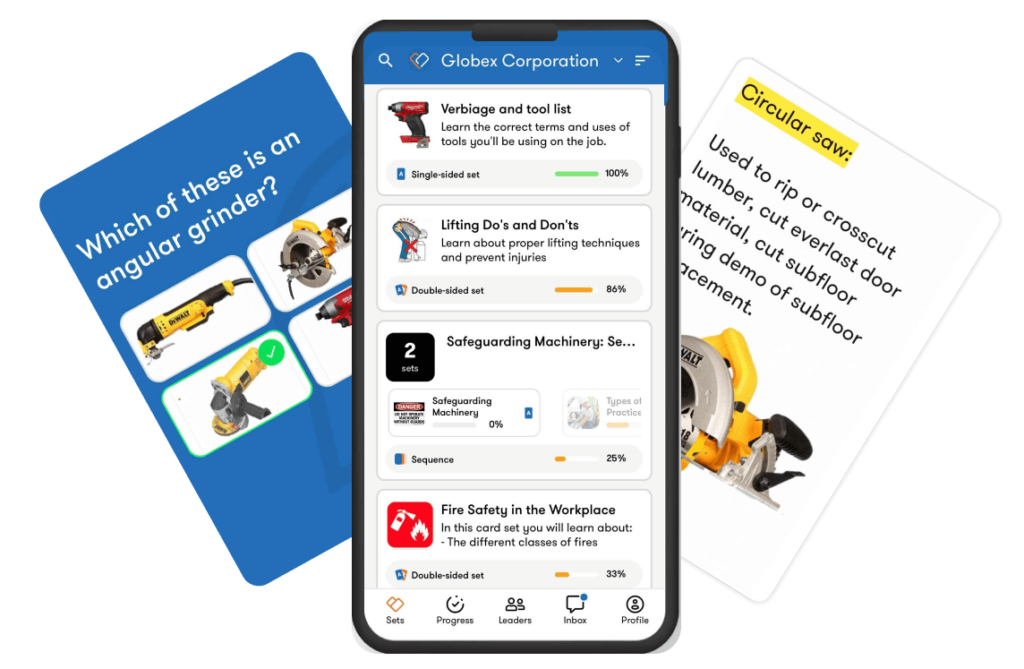While the term “distributed workforce” has become commonplace since the COVID-19 pandemic, the truth is that distributed work has always been the norm for a significant portion of businesses. Now that we’ve put a name on it, let’s understand what exactly a distributed workforce means, its advantages, and the role of distributed workforce tools.
- What is a distributed workforce?
- The evolution of work: from traditional offices to distributed teams
- Distributed workforce vs. remote work: what’s the difference?
- Advantages of embracing a distributed workforce
- Strategies for effective distributed workforce management
- 5 essential distributed workforce tools
- Building a distributed workforce: Steps to get started
- FAQs
- Key takeaways
What is a distributed workforce?
A distributed workforce has employees working in multiple locations. These include their homes, satellite offices, in the field, or traveling to various places. The one consistent location piece is that there isn’t a traditional central office.
Given this definition, some industries lend themselves to distributed work by nature. Employees in manufacturing, healthcare, food & beverage, retails, shipping & transportation, and many more, have always been distributed. Whether it’s a network of hospitals, multiple warehouses, or various franchise locations, these are all examples of a distributed workforce.
As remote work became more commonplace over the last years, businesses with transitional office settings have also adopted a distributed workforce model. A distributed workforce means you can have a diverse staff that draws from a global talent pool.
Thanks to technology and digital communication tools, staff can regularly communicate and collaborate regardless of location. This model fits well into today’s global business environment. Organizations can leverage talent from diverse backgrounds and time zones, contributing to creativity and innovation.
The evolution of work: from traditional offices to distributed teams
The landscape that once characterized office work has undergone a significant transformation. Rigid, traditional office settings have given way to the more flexible concept of distributed teams.
This transition marks a significant shift in how businesses operate, unlocking both opportunities and challenges. As we explore this evolution, it’s essential to understand what drives this change and its impacts.
A look back at the traditional office
Wake up, get ready, commute to the office, and work under the same roof as the rest of the staff. For decades, this model relied on physical presence and face-to-face interactions. The traditional office setting helped create a sense of community, but often sacrificed flexibility.
The digital revolution and the rise of remote work
The introduction of the internet brought about digital communication technologies. With those, the necessity of traditional offices began to wane. The possibility of remote work allowed employees to perform their jobs from anywhere in the world.
Tech companies and startups were early adopters of remote work, but it gradually gained traction across industries. Workplace flexibility became highly desired.
The distributed workforce: a new paradigm
Compared to the remote work model, the distributed workforce model takes geographical diversity to a different level.
When an employee is working remotely, it’s usually because their job can be done from anywhere in the world. They don’t need to be in a specific place. But when employees are distributed, it’s because their jobs require them to be in multiple locations. They can’t do their job from just anywhere, and oftentimes, they can’t do their job from one consistent location. This is what makes them distributed.
Remote work is typically operated under a centralized company structure. Distributed teams are spread across multiple locations, time zones, and sometimes countries. Geographical diversity is the cornerstone of these organization’ operational strategy.
The increase in distributed workforces is due to several factors:
- Access to the global talent pool
- Technological advancements
- Desire for work-life balance
- Improved customer service by servicing multiple time zones
- Globalization
Distributed workforce vs. remote work: what’s the difference?
The terms “distributed workforce” and “remote work” are often used interchangeably. They are, however, distinct operational models.
So let’s explore what is the difference between a remote and distributed workforce.
What is remote work?
Remote work allows employees to perform their job functions outside of a traditional office environment. Location independence provides options for working from home, in a co-working space, or in any location they choose.
Key characteristics of remote work include:
- Location flexibility
- Technology dependent
- Ease of adaptability
What is distributed work?
Distributed work demands that employees are working from multiple different locations. It’s not an option, the way remote work is. Geographical dispersion is an integral part of a company’s structure that operates with a distributed workforce model. The emphasis goes beyond location flexibility and convenience, with the strategic advantage of having a diverse, global team.
Key features of a distributed workforce include:
- Spanning multiple time zones and locations to cover more of the market
- Global talent pool
- Geographical diversity
While remote work provides individuals with location flexibility, a distributed workforce spans multiple locations by nature.
This distinction is vital for making strategic decisions about organizational structure, talent acquisition, and operational management.
Advantages of embracing a distributed workforce
The shift toward a distributed workforce model is a strategic move for many companies. It offers many benefits for businesses willing to adapt. From accessing global talent, to significant cost savings, there are many advantages. Let’s explore some of the benefits.
1. Access to a global talent pool
With a distributed workforce, you’re no longer limited to a local talent pool. The best person for the job can come from anywhere in the world.
You’re gaining:
- Diverse perspectives from different cultural backgrounds to grow creativity, insights, and innovation.
- Access to specialized skills that might be scarce in your local region.
2. Increased productivity
The traditional belief is that remote work can lead to a dip in productivity. Studies and real-world examples show that distributed teams can be more productive. The flexibility allows employees to create their optimal work environment.
How does productivity increase?
- Flexible schedules allow your staff to work during their most productive hours.
- Reducing commute time frees up time that can be spent on work or personal well-being.
3. Cost savings
Distributed workforces can reduce costs for both employers and employees. Companies may not need expensive central office spaces, and employees may have reduced commuting, food, or car maintenance costs.
Both company and staff benefit from:
- Lower overhead costs by eliminating a central office
- Flexible compensation structures with the ability to adjust salaries based on cost of living
4. Enhanced employee satisfaction
Higher levels of employee satisfaction and loyalty are often associated with a distributed workforce.
The flexibility to work anywhere can:
- Improve work-life balance when employees can manage their work schedules around their personal lives
- Reduce burnout through flexibility and autonomy, leading to happier employees
Embracing a distributed workforce delivers strategic advantages far beyond simple cost savings. It unlocks many positive advantages for employees that, in turn, fuels organizational growth.
Strategies for effective distributed workforce management
Managing a distributed workforce requires a nuanced approach. Having effective strategies can ensure remote teams are productive and collaborative.
Here are actionable strategies and best practices for business leaders navigating distributed workforce management:
Prioritize communication
- Implement daily or weekly team meetings and one-on-one check-ins to keep communication flowing.
- Use communication channels like Slack, Zoom, and email and clearly define each channel’s purpose.
- Establish clear policies on communication expectations, including responsiveness and availability.
Streamline project management
- Use project management software like Asana, Teamwork, and Trello to keep track of tasks, deadlines, and progress.
- Clearly define project objectives, timelines, and responsibilities.
- Schedule consistent project review meetings to keep everyone on track.
Embrace cultural diversity
- Provide training and resources to promote understanding and respect among different cultures.
- Organize inclusive team-building activities virtually for diverse backgrounds and time zones.
- Recognize and celebrate cultural holidays and traditions.
Leverage technology for collaboration
- Have a robust tech stack so your team can seamlessly collaborate and communicate.
- Implement strong cybersecurity measures to protect company data.
- Offer continuous learning opportunities to keep your team up to date.
Keep a strong company culture
- Create a virtual office culture similar to a physical office that is inclusive and positive.
- Implement recognition and rewards to celebrate achievements and boost morale.
- Encourage open communication by making leadership accessible to all.
Be an advocate for work-life balance
- Allow flexible work hours to accommodate different time zones.
- Provide access to mental health resources.
- Encourage employees to take time off and disconnect from work.
Integrating these strategies helps build a strong and productive distributed workforce. Effective management isn’t simply replicating the office experience remotely. It’s about reimagining what it looks like in the digital age.
5 essential distributed workforce tools
Moving from traditional offices to distributed teams requires changes in management and operations. Leadership styles, communication methods, and project management tools must adapt. With these changes, a more dynamic, inclusive, and technology-based approach to managing teams has emerged.
The tools needed can be grouped into the following categories.
1. Communication tool
Video conferencing platforms allow for face-to-face meetings, fostering engagement among team members. Instant messaging apps enable real-time communication.
2. Collaboration tool
Cloud-based document sharing services enable collaboration, real-time editing, and version control. Virtual whiteboards allow teams to brainstorm and create mind maps for visual collaboration.
3. Project management tool
Streamlining tasks, assigning responsibilities, and tracking progress can be done with a quality platform. The goal is to keep everyone informed and aligned.
4. Mobile training tool
A mobile learning platform is a must for a distributed workforce. A consistent onboarding process, continuous learning opportunities, and an easily accessible knowledge repository.
5. Cybersecurity tool
Working mostly online means protecting your company and staff at an all-time high. Using VPNs, multi-factor authentication, regular software updates, and security training is critical.
Building a distributed workforce: Steps to get started
Transitioning to a distributed workforce model is a strategic move that offers plenty of benefits.
Here are eight steps to help you get started.
- Define your vision and objectives
- Develop comprehensive policies
- Invest in a strong technology infrastructure
- Establish communication expectations
- Focus on culture to build engagement
- Offer ongoing support and training
- Implement a trial phase
- Evaluate and adapt over time
Make training easily accessible from anywhere with a powerful mobile app

FAQs
What does distributed work mean?
Distributed work means doing a job with location autonomy and flexibility. Employees of companies that operate with a distributed work model work from various regions and are not in a traditional office setting.
What is the difference between remote and distributed workforce?
Remote work allows employees to work outside of a central office location. Distributed work means that a company is deliberately structured in a way that requires employees to be operating across different locations.
What are the advantages of a distributed workforce?
The key advantages are:
- Access to a global talent pool
- Cost savings by reducing physical office space
- Ability to support customers across multiple time zones
- A diverse workforce that brings different perspectives and expertise to the business
Embracing the workplace future
Transitioning to a distributed workforce model presents the need for a forward-thinking approach. There are many advantages to adopting this model. It has the potential to reshape how businesses operate in a rapidly changing world.
Choosing a distributed workforce model isn’t without its challenges. But if you do it right, you’re addressing the need for change and leveraging its opportunities. You’re setting the stage for innovation, growth, and long-term success.
Key takeaways
- Understanding the difference between remote and distributed workforce meaning is crucial for choosing the right strategy to get the most out of each model.
- A distributed workforce model breaks down geographical barriers and widens the talent pool.
- Strategic use of technology is the key to successfully running a decentralized business.
- Transitioning to a distributed workforce requires technological and work culture shifts to support a geographically dispersed team.
Deliver training to distributed teams, right in the palm of their hands



